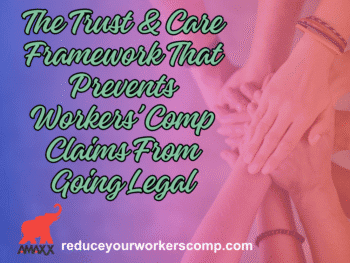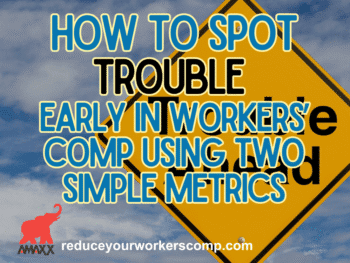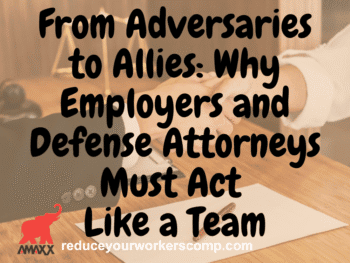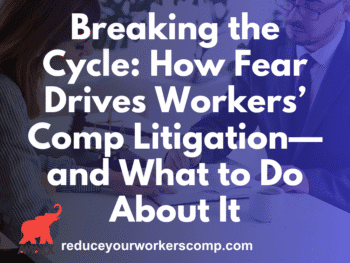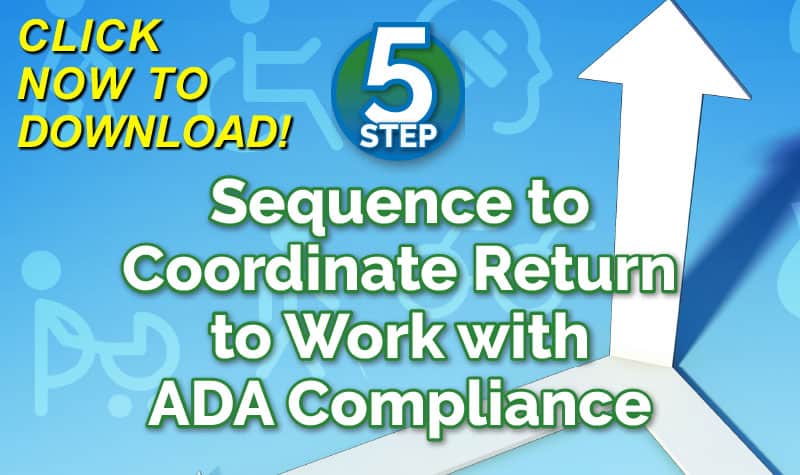Apparently not accordingly to Tom Robinson, J.D., writer for Lexis-Nexis Workers’ Comp Law Center. Here’s what he reveals . . .
Here’s What Happened
Wilson, a Clark County (Nevada) firefighter, filed a workers’ compensation claim with his employer for prostate cancer. Prior to the filing of Wilson’s claim, three other Clark County firefighters filed similar claims for prostate cancer and received compensation for an occupational disease.
Wilson worked with the three firefighters for seventeen years and was exposed to similar conditions, chemicals, and carcinogens. Unlike the three other firefighters, however, Wilson’s claim was denied.
Wilson appealed the Hearing Officer’s denial of his workers’ compensation claim. Appeals Officer Richins denied Wilson’s claim because (1) an independent medical examiner offered persuasive medical evidence contradicting Wilson’s allegations, and (2) Wilson failed to prove that he was exposed to carcinogens that were reasonably associated with the development of prostate cancer as required by NRS 617.453.
Wilson then filed a complaint pursuant to 42 U.S.C. § 1983 in federal court alleging Ayers, Stephens, and Richins-who apparently had prior knowledge of the three other firefighters’ successful claims-denied Wilson of his civil rights and conspired to do the same [while it is clear from the reported decision that Richins was the Appeals Officer who denied Wilson’s claim, it is unclear what relationship Ayers and Stephens had to Wilson’s workers’ compensation claim].
All three defendants moved to dismiss on the grounds that Wilson failed to serve Defendants within 120 days after the complaint was filed [Federal Rule of Civil Procedure 4(m)]. Additionally, Richins argued Wilson’s claims should be dismissed because they were barred by 42 U.S.C. § 1983’s statutory language, judicial immunity, and the exclusive remedy provisions of Nevada’s workers compensation statutes.
Here’s How the Court Ruled
In Wilson v. Ayers, 2009 U.S. Dist. LEXIS 57692 (D. Nev. July 7, 2009), the federal district court, finding that Richins, Ayers, and Stephens were eventually served, that it was highly unlikely that the defendants would be prejudiced by continued litigation, and that Ayers and Stephens failed to advance any additional arguments supporting dismissal, denied Ayers’ and Stephens’ motions (although the district court granted the defendants 30 days to file additional motions).
The district court granted Richins’ motion to dismiss on multiple grounds.
First, it indicated that because Wilson sued Richins in her official capacity as an employee of a state agency, Wilson effectively sued the state. Under § 1983, a plaintiff may bring a suit only against a “person.” The court said that the state, however, was not a “person” under 42 U.S.C. § 1983 and a state employee sued in her official capacity was also not a “person.”
Second, because Richins was a Hearing Officer who hears appeals and renders decisions, Wilson’s claim was barred by judicial immunity. The purpose of judicial immunity was to ensure an objective and independent judiciary by relieving judges from the threat of civil liability and protecting the finality of their judgments from collateral attacks by disgruntled litigants. (workersxzcompxzkit)
Third, to the extent that Wilson was also asserting a state claim for workers’ compensation benefits, his suit was barred by the exclusive remedy provisions of NRS 617.017 and NRS 617.200. Finally, Wilson’s suit against Richins was barred by the Eleventh Amendment. The state of Nevada had not waived immunity from suit conferred by the Eleventh Amendment.
See generally Larson’s Workers’ Compensation Law, §§ 100.01, 100.03.
Tom Robinson, J.D. is the primary upkeep writer for Larson’s Workers’ Compensation Law (LexisNexis) and Larson’s Workers’ Compensation, Desk Edition (LexisNexis). He is a contributing writer for California Compensation Cases (LexisNexis) and Benefits Review Board – Longshore Reporter(LexisNexis), and is a contributing author to New York Workers’ Compensation Handbook(LexisNexis). Robinson is an authority in the area of workers’ compensation and we are happy to have him as a Guest Contributor to Workers’ Comp Kit Blog. Tom can be reached at: compwriter@gmail.com.
http://law.lexisnexis.com/practiceareas/Workers-Compensation
Visit Our Websites:
Reduce Your Workers Comp: www.ReduceYourWorkersComp.com/
Workers Comp Kit: www:workerscompkit.com/
Try Our FREE�
WC Best Practices Quick Check: http://www.workerscompkit.com/intro/
See Our: Workers’ Compensation Toolkit: Corner.advisen.com/wc
Workers’ Comp Kit Books & Guides: Corner.advisen.com/wcbooks
More FREE tools to try:
WC Calculator: www.reduceyourworkerscomp.com/calculator.php
TD Calculator:
www.ReduceYourWorkersComp.com/transitional-duty-cost-calculator.php
WC 101: www.ReduceYourWorkersComp.com/workers_comp.php
Follow Us On Twitter: www.twitter.com/WorkersCompKit
View the Entire Blog: https://blog.reduceyourworkerscomp.com/
Do not use this information without independent verification.
All state laws vary.
©2008 Amaxx Risk Solutions, Inc. All rights reserved under International Copyright Law. If you would like permission to reprint this material, contact Info@WorkersCompKit.com



